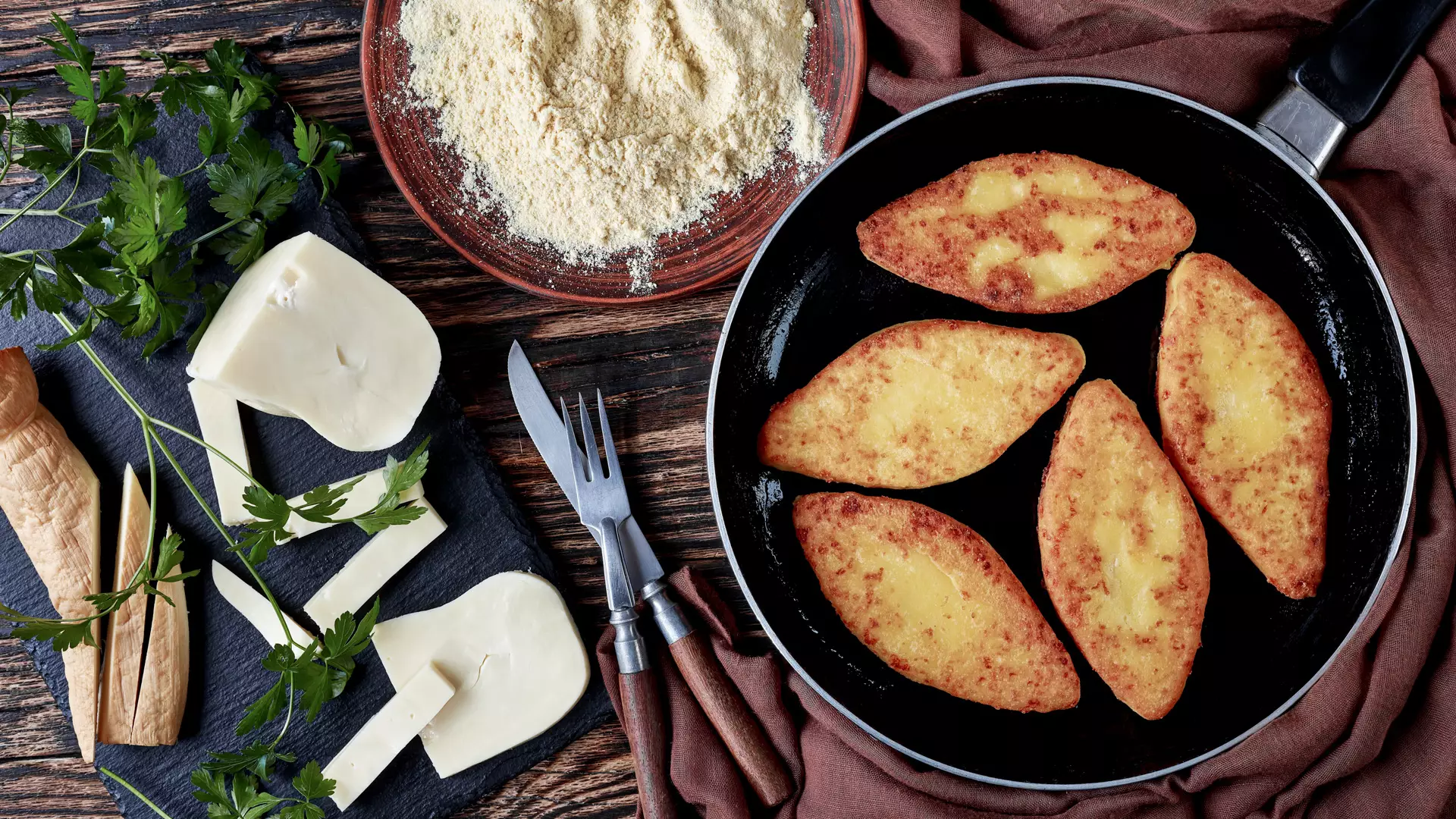Mchadi and Chvishtari
Corn in Georgia
Corn was first brought to Georgia in the 17th century and its soon became a widespread crop. It competed with, and almost completely replaced, earlier crops such as millet. Over time, different varieties of corn became common in various regions of Georgia, such as mountain corn.
Georgians fell in love with corn to such a degree that they even used it in place of bread. In western Georgia, it became unusual for a family not to have their own corn field. Crucially, if there was a good corn harvest, people could live peacefully, since there would be no threat of hunger. Corn ground at watermills in small gorges and by rivers was especially delicious, since the flour would be light and flake-like.
How Mchadi Is Made
Mchadi is a staple of Georgian cuisine. It is made by kneading together water and corn flour and may sound unspectacular, but the different ways of baking it produce varied (but equally sumptuous) results.
One way is using a stone pan, which is heated before plant leaves are layered onto it. Balls of dough are then inserted into them, flattened carefully with wet hands so that the edges do not crack, and then leaves are layered over it again. A sheet of tinfoil is then placed on top, with embers scattered over it.
Another variety is “kelamide mchadi.” Kelamidebi (small clay pans) are heated together, with layered leaves and hot mchadi attached to the insides. The last pan is covered with the tinfoil and embers, allowing each pan to heat the next one, meaning multiple mchadi are baked together.
Baking mchadi in a ghadari (fireplace) is another popular method. Once the firewood has completely burned down, the embers are extinguished and balls of mchadi are rolled into the ghadari, with ashes strewn on top. Once the baked mchadi has been well-rolled, it is soaked with water to remove all of the ashes. Today, as fireplaces have been widely replaced with modern ovens, baking mchadi by pan is the norm.
The key to mchadi is the quality of flour. The dough should be kneaded with warm water and a small amount of salt. The old saying goes that mchadi should be kneaded for so long that it almost bakes in your hands. Eventually, the dough should stick together well and become uniform. Recently, people have started to use mineral water in the kneading process, and mchadi made that way maintains its softness even when cold.
How to Make Chvishtari
Chvishtari is a pastry baked using a mixture of Georgian cheese and corn flour. It is one of the culinary calling cards of the western regions of Samegrelo and Svaneti.
To make chvishtari you will need:
500 g sifted corn flour;
Warm milk or matsoni (plain Georgian yoghurt), or even whey as required for kneading;
500 g sulguni (a Georgian cheese), crumbled and preferably wet and smoked;
½ tsp salt; and
A pinch of soda or baking powder.
Put the salt in the corn flour, and slowly add matsoni, milk, or whey, adding a pinch of soda as well before kneading it for a long time to achieve the desired soft dough. Mix in as much cheese as you have dough and let it sit for 15 minutes. Make small balls with the dough, flatten them, and put them into a preheated oven. Bake for 10-15 minutes at 250 degrees.
Chvishtari is commonly baked in butter, oil, or clarified butter.
Cookie Policy

